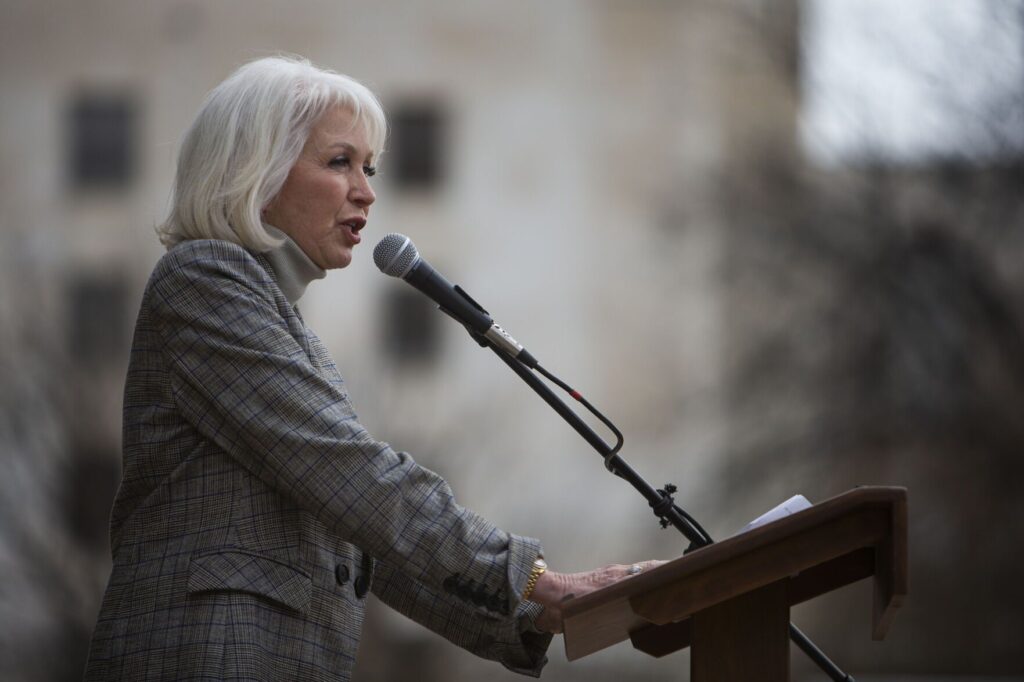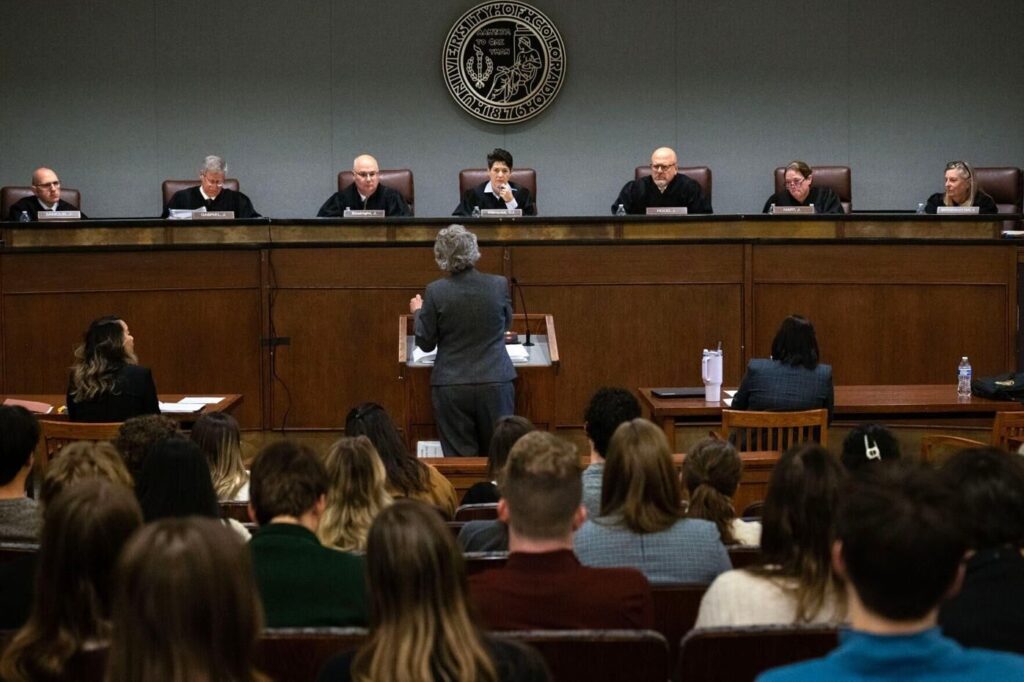WATCH: Colorado Conversations panel discusses solutions to state’s affordable housing problem

Solutions to Colorado’s lack of affordable housing problem will have to come from myriad angles, including regionalizing and streamlining permitting, increasing the skilled labor workforce and curing “NIMBYism,” industry experts said Thursday during a “Colorado Conversations” panel discussion.
The event, hosted by The Denver Gazette and Colorado Politics, focused on the causes of extremely low housing inventory, skyrocketing home prices and lack of new homes coming into the Colorado market. It also focused on potential solutions, including those coming from the state legislature this session.
“Inventory is devastatingly low, with only 1,486 homes actively listed in the seven-county metro Denver area. That’s down 71% from a year ago,” said Elizabeth Peetz, vice president of government affairs for the Colorado Association of Realtors. “One house’s value jumped from $555,000 to $659,000 from just January to February this year. That’s 84,000 in just 30 days! And it’s not just a Front Range problem – it’s statewide.”
The causes range from the large influx of new residents in recent years, many of whom came during the pandemic since working from home in Colorado can be appealing with its outdoors and active lifestyle, to millennials delaying home buying under the burden of student loans and high rent prices, said Peter LiFari, executive director of Maiker Housing Partners and a 2021 Terry J. Stevinson Fellow at the Common Sense Institute.
Denver’s real estate market soars, driven by low inventory, report says
“That housing supply crisis makes homes unaffordable, and it creates extreme downward pressure on lower-income Coloradans with evictions and homelessness,” LiFari said.
Jonathan Cappelli, executive director of Neighborhood Development Collaborative – a coalition of 19 metro Denver nonprofit affordable housing organizations – said pressure is felt by everyone as many can’t afford to live close to where they work.
“That’s creating incredibly high commute times, having to live in substandard housing because they can’t afford to move,” Cappelli said.
And if millennial renters aren’t moving to homes, that further constricts availability in the multifamily market.
When asked why homebuilders can’t just ramp up production to meet the demand, Colorado Association of Home Builders CEO Ted Leighty said it comes down to “the four Ls” – lumber, labor, loans and land.
Lumber prices rose 30 percent in 2021, said Leighty, who is also the CEO of the HBA of Metro Denver.
“As far as land, there’s a huge constriction of developable land,” he said.
Loan prices are rising as the Fed recently raised interest rates, he said, but perhaps the biggest issue is the lack of laborers skilled in construction.
“The average age for skilled workers is 46. We need to get more younger workers to replace those retiring,” he said.
Too much focus on getting a four-year college degree to be successful helped cause the problem, as students steer clear of trade schools, he said. But those coming out of apprenticeships can earn $30 an hour, or $70,000 per year starting out, Leighty noted.
Habitat for Humanity of Colorado Executive Director Karen Kallenberg said it is encouraging to see legislators attack the problem with about 20 pieces of proposed legislation to tackle a wide array of issues, such as grants to local governments and nonprofits, producing more affordable housing, a revolving loan fund to help produce more workforce housing, and helping mobile home owners.
“Increasing the amount of tax credits is a powerful tool for affordable rental developers,” Kallenberg said. “There is no one solution – it’s going to have to come from every direction. I see a lot of creativity happening with these bills.”
The state spent $43 million on affordable housing measures in previous years, Cappelli said, and that number has jumped to $400 million in committed funds.
“NIMBYism” – the “not in my backyard” anti-development sentiment – remains a huge problem when developers try to bring affordable, or workforce housing, to communities, Leighty said. Many agree it’s needed, just not near them, he said.
He echoed the call for cities and counties to work together to adopt “regionalism” when it comes to permitting and zoning.
“We’ve got to be able to tighten up our timeframes for review, for entitlements, for permitting,” he said, noting some housing developments take in excess of two or three years just to get dirt moving. Developers spend a lot of money trying to clear the permitting process, only to face “bottleneck” at the local government approval process or possibly “lose all that in one night at a city council meeting.”
“I know that local control is sacrosanct. To a large degree, home rule is really good. It serves Coloradans pretty well, but we do have a statewide problem right now,” he added.
“If done right … you don’t necessarily give up your approval power,” Leighty said, referring to the idea of regionalism. “You’re just synthesizing with other governments. We do this all the time. We do this on transportation planning. We do this with policy for seniors.”
Affordable housing goes to those who make 60% of the median income of a given area, while workforce housing is typically for those who make 80% of the area’s median income, the experts said.
LiFari also said an education campaign needs to make the notion of smaller, more dense, more energy efficient homes acceptable as people understand its benefits, such as sparing more open space and keeping housing near employment centers.
LiFari said more “use by right” zones would “create less regulatory approval processes.”
“If (a developer) meets this type of overlay, there’s a fast-track to approval,” he said. “There’s still public comment. But this way, both the developer and community members understand the expectations of the process. Right now, that consistency is lacking. It’s a problem across the U.S.”
Colorado faces an acute housing shortage, sending home prices and rents skyrocketing and residents reeling, the effects of which are felt across kitchen tables to main street and board rooms alike. State policymakers have vowed to tackle this crisis. So, what are the proposed solutions? What can the state do, for example, to spur building of affordable homes? Watch the forum on demand now!











